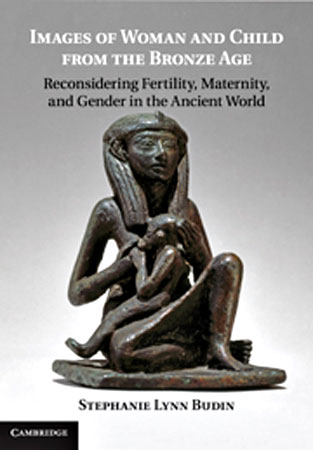Images of Woman and Child from the Bronze Age. Reconsidering Fertility, Maternity, and Gender in the Ancient World
Stephanie Lynn Budin

City: Cambridge
Year: 2011
Publisher: Cambridge University Press
Description: Hardback, 390 p., 46 b/w illustrations, 25,3x21,5 cm
Abstract
This book is a study of the woman-and-child motif – known as the kourotrophos – as it appeared in the Bronze Age eastern Mediterranean. Stephanie Lynn Budin argues that, contrary to many current beliefs, the image was not a universal symbol of maternity or a depiction of a mother goddess. In most of the ancient world, kourotrophic iconography was relatively rare in comparison to other images of women and served a number of different symbolic functions, ranging from honoring the king of Egypt to adding strength to magical spells to depicting scenes of daily life. This work provides an in-depth examination of ancient kourotrophoi and engages with a variety of debates that they have spawned, including their role in the rise of patriarchy and what they say about ancient constructions of gender.
Contents
List of Illustrations [vii]
Acknowledgements [ix]
1. Introduction – Kourotrophic Iconography in the Ancient Near East and Mediterranean: Origins and Meanings [1]
Theorizing the Kourotrophos: Where Sex Meets Gender [4]
Dealing with Figurines [25]
A Few Words on the Term “Kourotrophos” [29]
Inverse [32]
2. Egypt [35]
Egyptian Decorum [36]
The Divine Wet Nurse [38]
Parents and Nurses and Tutors [89]
Potency Figurines [117]
Ostraca and Wall Paintings: Die Wochenlaube [135]
Flasks [142]
Straddling the Gender Divide: Male Kourotrophoi [147]
3. The Levant and Anatolia [149]
The Levant [149]
Anatolia [173]
4. Mesopotamia and Iran [184]
Mesopotamia [184]
Iran [214]
5. Cyprus [221]
Maternity in the Cypriot Iconographic Record [221]
The Bronze Age Kourotrophoi of Cyprus [229]
6. The Aegean [269]
Minoan Crete [269]
Mycenaean Greece [299]
7. Conclusions [326]
Rare, Uncommon, Atypical [327]
The Ambiguity of Status [329]
The Matter of Gender [333]
Summary [346]
Bibliography [349]
Index [379]

Comments
Παρακαλούμε τα σχόλιά σας να είναι στα Ελληνικά (πάντα με ελληνικούς χαρακτήρες) ή στα Αγγλικά. Αποφύγετε τα κεφαλαία γράμματα. Ο Αιγεύς διατηρεί το δικαίωμα να διαγράφει εκτός θέματος, προσβλητικά, ανώνυμα σχόλια ή κείμενα σε greeklish.